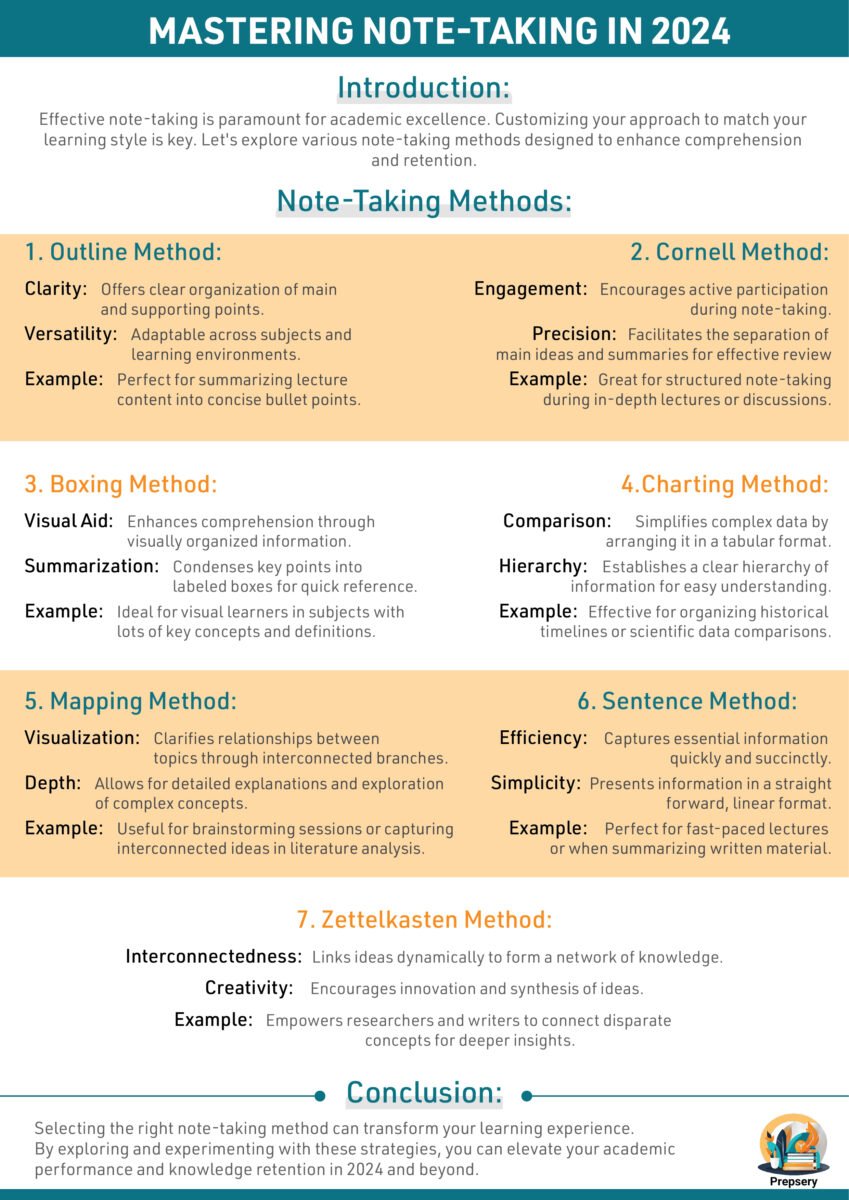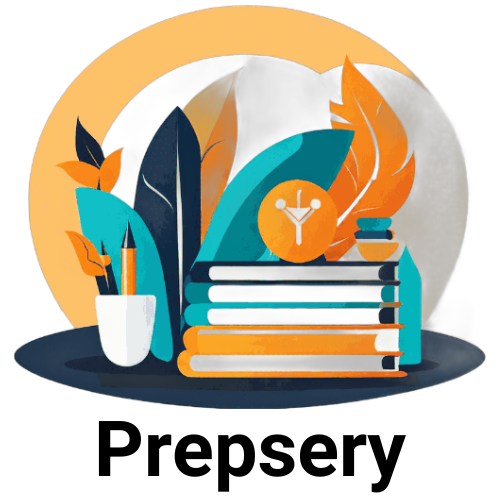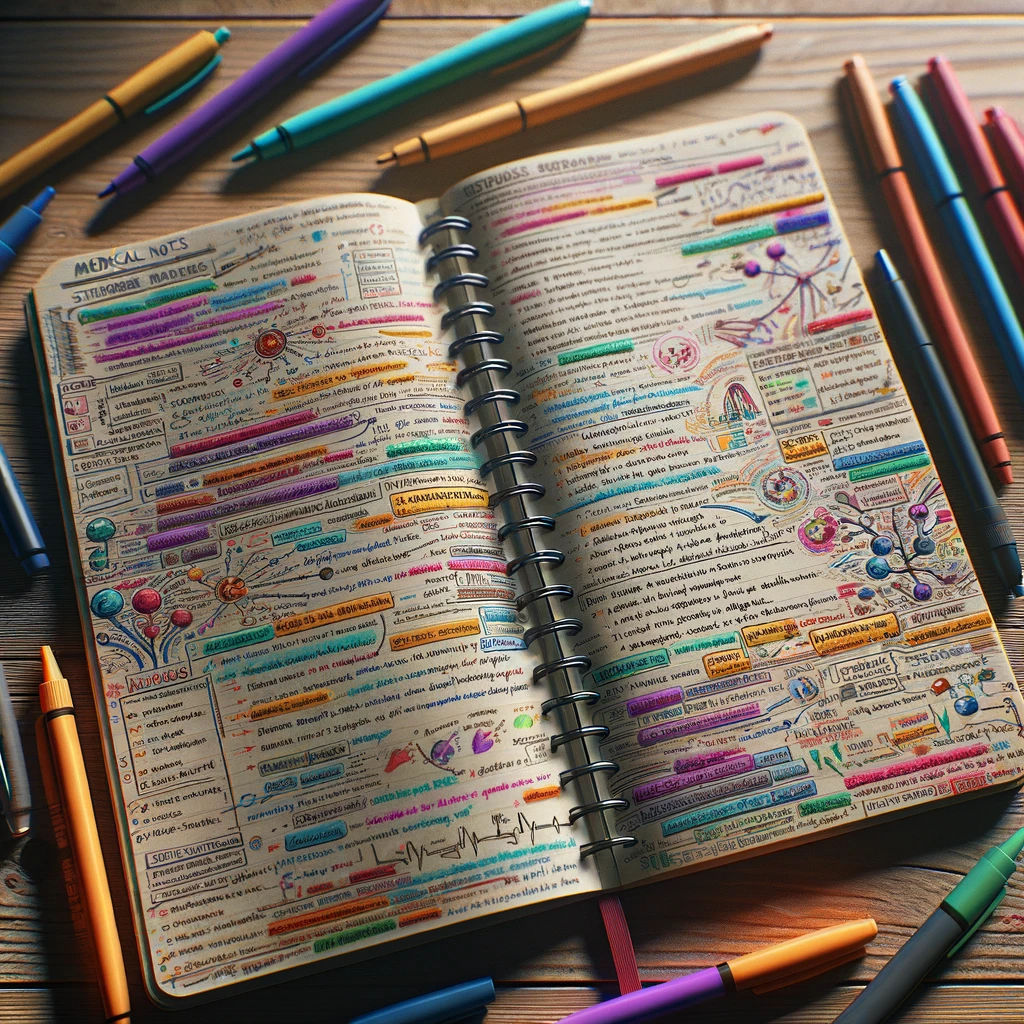Note-Taking Methods & Strategies You Need to Use In 2024
Discovering the best note-taking method is essential for effective knowledge absorption and retention. The Outline and Cornell methods, with their structured organization, cater to various learning styles, offering efficiency and thorough review opportunities.
Visual learners might gravitate towards methods like Boxing or Mapping for their graphical summarization of information. Meanwhile, the debate between handwritten and digital notes highlights the importance of personal preference, with each having distinct advantages in comprehension and accessibility. Considering a hybrid approach could merge the best of both worlds. Whether you are a visual, auditory, or kinesthetic learner, identifying the right strategy can revolutionize your learning process.
Let’s explore how you can elevate your note-taking skills.
Note-Taking Methods Compared (When to Use Each Method)

As we explore the domain of effective note-taking, it’s crucial to compare the distinct methodologies—The Outline (Bullet) Method, The Cornell Method, The Boxing Method, The Charting Method, The Mapping Method, The Sentence Method, and The Zettelkasten Method —to identify their respective strengths and weaknesses.
Each approach offers unique advantages tailored to various learning preferences and academic disciplines, necessitating a thoughtful selection to maximize comprehension and recall.
How can these diverse strategies be best employed to enhance our note-taking practices, ensuring academic success across a spectrum of subjects?
The Outline Method (or Bullet Point Method)
Why should students consider the Outline Method (or Bullet Point Method) as an efficient strategy for structuring their notes? This approach, distinguished by its simplicity and effectiveness, offers a structured note-taking framework that empowers learners with the freedom to capture the essence of their lectures without feeling constrained by overly rigid rules.
- Structured Organization: It naturally organizes notes by main points and related points, offering clarity at a glance. Often uses bullet points, hence the name Bullet Point Method.
- Flexibility: The outline method adapts easily to various subjects, except those heavily reliant on visual elements.
- Efficiency: It enables quick jotting of information, making it ideal for summarizing content concisely.
- Review and Study: Notes structured in this way are excellent for quick reference and effective study sessions, enhancing academic performance.
The Cornell Method
Adopting the Cornell Method transforms the challenging task of note-taking into an organized, efficient process that greatly enhances study effectiveness and information retention. The Cornell note-taking method, recognized as one of the top methods, leverages a two-column format to distinguish main points from summaries, thereby promoting a deeper engagement with the material.
By allocating space for cues or questions on the left and detailed notes on the right, it encourages an active learning stance, facilitating self-testing and thorough review. The process of summarizing information in one’s own words within this framework not only clarifies understanding but also streamlines the revision process.
For those seeking liberation from chaotic and ineffective note-taking habits, the Cornell Method offers a structured path to academic freedom and success.
The Boxing Method
Investigating the Boxing Method reveals a visually structured approach to note-taking, crafted to improve information retention and comprehension through its use of distinct, labeled boxes. This method, highly visual and tailored toward visual learners, emphasizes organizing information in a way that is both accessible and aesthetically pleasing.
- Ideal for Visual Learners: Enhances comprehension and retention for those who prefer visual learning cues.
- Summarizing Key Points: Facilitates quick revision by neatly summarizing and compartmentalizing key information.
- Highly Visual and Organized: Transforms notes into a structured, easy-to-navigate format.
- Not Suitable for Rapid Note-Taking: Its detailed nature requires more time, making it less ideal for fast-paced environments.
The Boxing Method, with its focus on visual learners and summarizing key points, presents organized information in a highly visual manner, promoting freedom in learning and review strategies.
The Charting Method
Exploring the Charting Method reveals its prowess in streamlining the organization of complex data through structured comparisons and categorization, promising enhanced comprehension and retention for meticulous subjects.
This approach to taking notes is not just about jotting down information; it’s about creating an organized and easy-to-navigate hierarchy of information that champions clarity.
The charting method excels in facilitating comparison and summarization, presenting a compelling case for its application in diverse academic and professional fields.
By meticulously organizing data into columns and rows based on shared properties, this method not only simplifies the complex but also enriches the learning experience.
It’s an invaluable tool for those seeking a methodical way to dissect and understand intricate material, making it a cornerstone strategy for taking good notes.
The Mapping Method
The Mapping Method excels in visually organizing notes into branches to elucidate the relationships between topics. This method not only fosters comprehension through visual aid but also encourages freedom in note-taking by allowing for the creative representation of complex information.
Consider the following:
- Branching Structure: Enables the demonstration of how topics are interconnected, catering especially to visual learners.
- Detailed Explanations: Ideal for subjects requiring depth and clarity in understanding.
- Visual Learners: Enhances retention for those who thrive on visual cues.
- Relationships Between Topics: Offers a unique perspective on how different pieces of information relate to each other, promoting a holistic understanding.
The Mapping Method, with its emphasis on visual representation and detailed explanations, is a powerful tool in the arsenal of effective note taking strategies.
The Sentence Method
This note-taking technique, using complete sentences, is designed for capturing essential information swiftly and succinctly. It’s particularly suited for fast-paced situations where time is of the essence. Despite its simplicity, the Sentence Method guarantees content is recorded in an organized, linear fashion, making it easy to follow.
| Pros | Cons |
| Quick information capture in fast-paced situations | Lacks visual organization |
| Easy to implement with both handwritten and digital tools | Might not suit complex subjects requiring detailed analysis |
| Promotes organization in a linear fashion | Can be verbose for some users |
Adopting the Sentence Method offers freedom from intricate formatting, focusing solely on the essence of the material presented.
The Zettelkasten Method
Could the Zettelkasten Method, with its unique approach to creating a web of interconnected notes, revolutionize your study and research habits by enhancing idea synthesis and long-term information retention? This method, emphasizing the liberation of thought and the freedom to explore ideas, invites you to ponder its potential benefits:
- Single Idea Per Card: Focuses on capturing a single thought, enabling thorough exploration into each concept.
- Interconnected Notes: Constructs a dynamic network of thoughts, encouraging the investigation of complex relationships.
- Active Engagement: Encourages an active, hands-on approach to learning and idea development.
- Idea Synthesis: Facilitates the synthesis of disparate ideas, fostering creativity and innovation.
The Zettelkasten Method, by encouraging a network of interconnected notes and active engagement, could be the key to unleashing a more effective and liberating approach to learning.
Handwritten Vs. Digital Notes Method of Note-Taking (Does It Matter?)
In evaluating the best method of note-taking, the debate between handwritten notes and digital notes emerges as a critical consideration for optimizing learning outcomes. This discourse is not just about preference; it’s about how these methods align with cognitive processing, engage working memory, and ultimately cater to diverse learning preferences.
Handwriting notes, with its requirement for more cognitive processing, fosters a deeper understanding and retention of material. This method forces learners to synthesize information, promoting a more active engagement with the content. For those with strong working memory, this approach can notably enhance conceptual grasp and long-term retention.
Conversely, digital notes shine in their ability to organize and retrieve information swiftly. Their appeal lies in efficiency, especially for those whose learning preferences tilt towards quick access and seamless editing. This method caters well to an era where information is vast and time is precious.
The choice between handwritten and digital notes should not be a rigid one. Recognizing that each has its place in the learning ecosystem, adopting a hybrid approach might offer the best of both worlds. This flexibility empowers learners to tailor their different note-taking strategies to suit specific scenarios, ensuring that the process of learning remains both effective and liberating.
Note-Taking Strategies for ESL Students
For ESL students, mastering the art of note-taking is a vital step towards academic success, as it bridges the gap between language comprehension and knowledge acquisition.
Implementing effective note-taking tips can greatly enhance the learning experience, offering a pathway to greater understanding and retention of material. Here’s how:
- Utilize Visual Aids: Integrate diagrams and charts into notes. Visual aids simplify complex information, making it easier to grasp and remember. They serve as a universal language, transcending linguistic barriers and fostering a deeper understanding of the subject matter.
- Practice Active Listening: Focus on key vocabulary and concepts during lectures. Active listening encourages engagement with the material, allowing for the identification of important information that forms the basis of useful notes.
- Leverage Language Translation Tools: Use apps or dictionaries to understand unfamiliar terms. Language translation tools bridge the gap between your native language and English, ensuring that no vital details are lost in translation.
- Create Flashcards: Combine English terms with their translations. Flashcards are a powerful tool for vocabulary retention, transforming passive learning into an active, engaging process.
Good Note-Taking Skills Based on Your Learning Style (VAK)
Understanding your unique learning style—visual, auditory, or kinesthetic—can greatly help you as you take notes during class or try to capture the main idea or important points prior to an exam. By identifying whether you’re a visual, auditory, or kinesthetic learner, you can tailor your note-taking to fit your learning style, maximizing your academic freedom and potential. But how exactly can you adapt your note-taking techniques to suit your individual needs?
Here’s a concise guide:
| Learning Style | Take Notes Like This |
| Visual Learners | Utilize diagrams, charts, and color coding. |
| Auditory Learners | Record lectures or discuss notes aloud. |
| Kinesthetic Learners | Engage in drawing, writing, or manipulating objects. |
| Combined Styles | Mix and match techniques for optimized learning. |
Visual learners, for example, thrive when notes are colorful and structured, allowing them to visualize information vividly. Visual types love mind-mapping and lists that highlight subtopics in a nice, orderly fashion.
Auditory learners, on the other hand, benefit from hearing and discussing content, making recorded lectures or spoken summaries powerful tools.
Kinesthetic learners will find that integrating physical activity into their study—like writing out notes by hand or using models—can significantly aid in retention and understanding.
In embracing these tailored note-taking techniques, you’re not just learning; you’re mastering the art of learning in a way that speaks directly to your unique style. And no matter what your style, it’s important to learn one subtopic at a time, using spaced repetition and active recall to ensure the material sticks for longer than it takes for you to finish studying.
Top 4 Note-Taking Tools and Apps on the Market Today
Are you looking for the best note-taking tools and apps to enhance your academic or professional productivity? In today’s fast-paced environment, leveraging the right tools can be a game-changer in how you capture, organize, and review your notes.
Whether you’re a visual learner, a fan of Cornell notes, or in search of effective methods that grant you the freedom to tailor your note-taking process, we’ve curated a list of top tools and apps that stand out on the market today.
- Evernote: A powerhouse for those who appreciate organization and the ability to sync across devices. Its versatility supports various note-taking methods, including Cornell notes.
- OneNote: Microsoft’s answer to digital note-taking, offering a canvas-like interface perfect for visual learners. It seamlessly integrates with Office tools, making it easy to revisit your lecture content.
- Notion: Not just a note-taking app but an all-in-one workspace. Its customization options are unparalleled, allowing for effective methods of tracking and organizing information.
- GoodNotes: Tailored for iPad users, it turns your tablet into a digital notebook. Its annotation capabilities make it ideal for interactive and engaging note-taking during lectures.
Choosing the right tool from this list can have a significant impact on your ability to capture and utilize academic or professional content effectively.
Frequently Asked Questions (Note Taking)
Q: How can note-taking strategies improve my learning?
A: Note-taking is a valuable skill that can help you learn and remember information better. Using effective strategies can enhance your understanding and retention of key concepts.
Q: Why is it important to take notes during classes, lectures, or meetings?
A: Research shows that actively taking notes during classes, lectures, or meetings allows you to engage with the material, focus on what’s most important, and improve your overall comprehension of the subject matter.
Q: What are some recommended methods for taking notes effectively?
A: Some popular note-taking methods include the Cornell note-taking technique, sentence note-taking, and using note cards to organize information (Zettelkasten). Each method offers a structured way to capture and review key points.
Q: How can I make the most out of office hours when taking notes?
A: It’s also helpful to write down questions before attending office hours to ensure you cover the topics that are most important to you. This can help you make the most of your time with the instructor.
Q: Is typing notes as effective as handwriting them?
A: While typing notes can be faster, research suggests that writing notes by hand may lead to better retention of information. It’s recommended to find a method that works best for you based on your learning style.
Q: How can I organize my notes in a way that is easy to review later?
A: Starting by writing a main summary or key points at the top of your notes can help you quickly reference the main ideas. Additionally, structuring your notes in a logical format similar to the outline method can make them easier to review.
Q: Are there specific strategies for students with learning disabilities to improve their note-taking skills?
A: Students with learning disabilities can benefit from adapted note-taking techniques, such as breaking information into smaller chunks, using visual aids, or recording lectures to review later. It’s important to find methods that cater to individual needs.
Closing Thoughts – Taking Good Notes in Class: You Are Your Best Academic Coach
Effective note-taking acts as the compass guiding students through the intricate maze of academic success. Like the ancient mariners who relied on the stars to navigate the vast oceans, students equipped with the right note-taking strategies can confidently chart their course through the complexities of learning.
Embracing diverse methods, adapting to technological advancements, and aligning with individual learning styles guarantees not only the retention but also the comprehension of knowledge, thereby illuminating the path to educational achievement.


